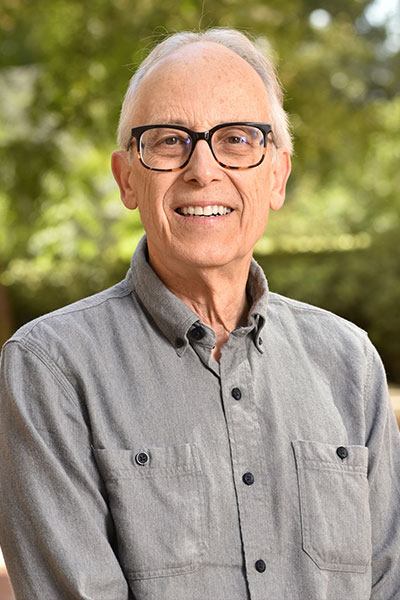Gina Poe
Gina Poe
Professor
Director of Maximizing Access to Research Careers U*STAR Program
Eleanor Leslie Chair in Innovative Brain Research
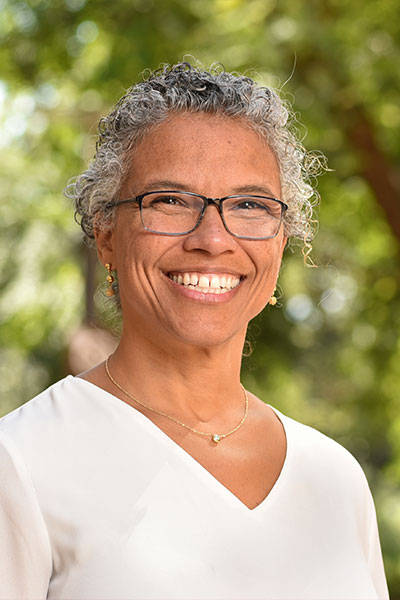
Email: ginapoe@ucla.edu
Office: 1032 TLSB
Phone: (310) 825-8939
Website: poe_sleeplab@weebly.com
Biography
Gina Poe has been working since 1995 on the mechanisms through which sleep serves memory consolidation and restructuring. Dr. Poe is a southern California native who graduated from Stanford University then worked for two post-baccalaureate years at the VA researching Air Force Test Pilots’ brainwave signatures under high-G maneuvers. She then earned her PhD in Basic Sleep in the Neuroscience Interdepartmental Program at UCLA under the guidance of Ronald Harper then moved to the University of Arizona for her postdoctoral studies with Carol Barnes and Bruce McNaughtons looking at graceful degradation of hippocampal function in aged rats as well as hippocampal coding in a 3-D maze navigated in the 1998 space shuttle mission. She brought these multiunit teachings to answer a burning question of whether REM sleep were for remembering or forgetting and found that activity of neurons during REM sleep is consistent both with the consolidation of novel memories and the elimination of already consolidated memories from the hippocampus, readying the associative memory network for new learning the next day. Moving first to Washington State University then to the University of Michigan before joining UCLA in 2016, Poe has over 80 undergraduates, 6 graduate students, and 6 postdoctoral scholars, and has served in university faculty governance as well as leading 5 different programs designed to diversify the neuroscience workforce and increase representation of people of the global majority in the STEM fields. At UCLA she continues research and teaching and Directs the COMPASS-Life Sciences and BRI-SURE programs and co-Directs the MARC-U*STAR program. Nationally she is course director of the Marine Biological Lab’s SPINES course and co-Directs the Society for Neuroscience’s NSP program which earned the nation’s highest mentoring honor in 2018. These programs have served over 600 PhD level trainees over the years.
Research Interests
The Poe lab investigates the mechanisms by which sleep traits serve learning and memory consolidation. Memories are encoded by the pattern of synaptic connections between neurons. We employ tetrode recording and optogenetic techniques in learning animals to see how neural patterns underlying learning are reactivated during sleep, and how activity during sleep influences the neural memory code. Both strengthening and weakening of synapses is important to the process of sculpting a network when we make new memories and integrate them into old schema. Results from our studies suggest that while synaptic strengthening can be efficiently accomplished during the waking learning process, the synaptic weakening part of memory integration requires conditions unique to sleep. The absence of noradrenaline during sleep spindles and REM sleep as well as the low levels of serotonin during REM sleep allow the brain to integrate new memories and to refresh and renew old synapses so that we are ready to build new associations the next waking period. Memory difficulties involved in post-traumatic stress disorder, Schizophrenia, Alzheimer’s disease and even autism involve abnormalities in the sleep-dependent memory consolidation process that my lab studies. Keywords: Sleep, learning and memory, PTSD, memory consolidation, reconsolidation, REM sleep, sleep spindles, Norepinephrine, LTP, depotentiation, reversal learning, optogenetics, electrophysiology, tetrode recordings, hippocampus, prefrontal cortex.
Education
B.A., Human Biology, Stanford University 1987
Ph.D., Neuroscience, University of California, Los Angeles 1995
Selected Publications
Cabrera Y, Holloway J, Poe GR (2020) ‘Sleep Changes Across the Female Hormonal Cycle Affecting Memory: Implications for Resilient Adaptation to Traumatic Experiences.’ J Womens Health (Larchmt), 29 (3): 446-451. PMID: 32186966
Swift KM, Keus K, Echeverria CG, Cabrera Y, Jimenez J, Holloway J, Clawson BC, Poe GR () ‘Sex differences within sleep in gonadally-intact rats.’ Sleep, 2019.PMID: 31784755
Swift KM, Gross BA, Frazer MA, Bauer DS, Clark KJD, Vazey EM, Aston-Jones G, Li Y, Pickering AE, Sara SJ, Poe GR (2018) ‘Abnormal Locus Coeruleus Sleep Activity Alters Sleep Signatures of Memory Consolidation and Impairs Place Cell Stability and Spatial Memory.’ Curr Biol, 28 (22): 3599-3609.e4. PMID: 30393040
Zaborszky L, Gombkoto P, Varsanyi P, Poe GR, Role L, Ananth M, Rajebhosale P, Talmage D, Hasselmo M, Dannenberg H, Minces V, Chiba A, “Specific basal forebrain-cortical cholinergic circuits coordinate cognitive operations”, J Neurosci, 38 (44): 9446-9458 (2018).
Lewis P, Knoblich G, Poe GR, “Recasting reality: how memory replay in sleep boosts creative problem solving”, Trends Cogni Sci, 22 (6): 491-503 (2018).
Bjorness TE, Booth V, Poe GR (2018) ‘Hippocampal theta power pressure builds over non-REM sleep and dissipates within REM sleep episodes.’ Arch Ital Biol, 156 (3): 112-126. PMID: 30324607
Poe GR (2017) ‘Sleep Is for Forgetting.’ J Neurosci, 37 (3): 464-473. PMID: 28100731
Javanbakht, A and Poe, GR, “Behavioral neuroscience of circuits involved in arousal regulation”, The Neurobiology of PTSD, Ressler, K and Liberzon, I(Eds.), 130-147 (2016).
Emrick JJ, Gross BA, Riley BT, Poe GR (2016) ‘Different Simultaneous Sleep States in the Hippocampus and Neocortex.’ Sleep, 39 (12): 2201-2209. PMID: 27748240
Vanderheyden WM, George SA, Urpa L, Kehoe M, Liberzon I, Poe GR (2015) ‘Sleep alterations following exposure to stress predict fear-associated memory impairments in a rodent model of PTSD.’ Exp Brain Res, 233 (8): 2335-46. PMID: 26019008.
Watts A, Gritton HJ, Sweigart J, Poe GR (2012) ‘Antidepressant suppression of non-REM sleep spindles and REM sleep impairs hippocampus-dependent learning while augmenting striatum-dependent learning.’ J Neurosci, 32 (39): 13411-20. PMID: 23015432
Booth V, Poe GR (2006) ‘Input source and strength influences overall firing phase of model hippocampal CA1 pyramidal cells during theta: relevance to REM sleep reactivation and memory consolidation.’ Hippocampus, 16 (2): 161-73. PMID: 16411243
Amy Rowat
Amy Rowat
Professor
Vice Chair of Master’s Program
Marcie H. Rothman Presidential Chair in Food Studies
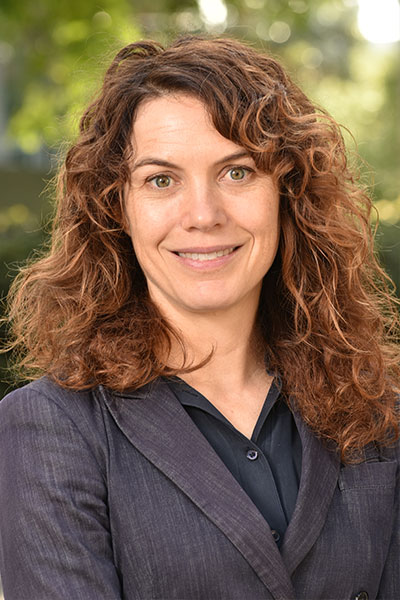
Email: rowat@ucla.edu
Office: 1125 TLSB
Phone: (310) 825-4026
Website: http://www.physci.ucla.edu/research/rowat/RowatLab.html
Biography
Amy Rowat is a biophysicist with degrees from Mount Allison University (B.Sc. Honors Physics; B.A. Asian Studies, French, & Math), the Technical University of Denmark (M.Sc. Chemistry), and the University of Southern Denmark (Ph.D. Physics). She completed postdoctoral training at Harvard University and Brigham-Women’s Hospital, and was a Research Fellow at the German Cancer Research Center (DKFZ). Rowat is Associate Professor and Vice Chair of Graduate Education in the Department of Integrative Biology & Physiology at the University of California at Los Angeles. She is also a member of the UCLA Bioengineering Department, the Center for Biological Physics, the Jonsson Comprehensive Cancer Center, and the Broad Stem Cell Research Center. Rowat is the author of over 50 scientific papers and inventor on over 6 patents. She is the recipient of numerous awards for excellence in research innovation and teaching, including the prestigious National Science Foundation CAREER award. Rowat has pioneered the use of food to teach sophisticated concepts in science, and has both written and lectured on the topic of science and food to hundreds of UCLA students and public audiences. Rowat is also Founder and Director of the Science&Food non-profit organization and leads the Food Pod of the Semel Healthy Campus Initiative Center at UCLA.
Research Interests
Biology is commonly described in terms of specific genes and chemical reactions – transcription, translation – and cells as sacs filled with DNA. But cells are materials and the physical properties of cells are critical for many physiological functions: how cells deform to circulate through the body; how cells resist mechanical stresses – like stretching or squeezing – is important for homeostasis, and also critical in many diseases where cells have altered physical properties.
In the Rowat lab we think about how tissues and cells sense and respond to external cues in terms of cells as materials: how do cells maintain their physical properties and regulate them in response to external cues?
To address this question we have three main research goals:
1) MEASURE: We are developing new mechanotyping technologies, such as self-assembling scaffolds that have tunable mechanics and topology as well as a deformability screening platform – we recently tested thousands of small molecules and found compounds that make cancer cells stiffer and less invasive; this also enables us to develop systems-level knowledge of the ‘mechanome’.
2) UNDERSTAND: Measuring physical properties are not enough. We are defining the molecules and pathways that regulate cellular mechanotype. For example, we discovered that soluble stress hormones activate a pathway that causes cancer cells to increases the forces they use to pull on their surrounding matrix, which makes them invade more quickly. Knowing that molecules are involved is an important first step towards intervening to stop cancer cells from spreading.
3) TRANSLATE: We are harnessing mechanobiology for translation to applications from cancer to cellular agriculture. In addition to molecules we have identified to stop cancer cell invasion, we are also applying our knowledge to tumors as 3D materials. For example, modulating cellular force generation can change tumor porosity, and ultimately increase the accessibility to chemotherapy drugs. While cancer is a main focus of our work, our approaches can be broadly applied across cell types, and we have also investigated cell physical properties in the context of immune cells to cardiac regeneration to neurological movement disorders such as dystonia to cultured meat.
To achieve these research goals, our multidisciplinary team consists of researchers with backgrounds in cell biology, physics, engineering, cancer progression, systems biology, and chemistry.
Education
B.Sc., Physics, Mount Allison University 1998
B.A., Asian Studies, French, & Math, Mount Allison University 1999
M.Sc., Chemistry, Technical University of Denmark 2001
Ph.D., Physics, University of Southern Denmark 2005
Selected Publications
Kim TH, Ly C, Christodoulides A, Nowell CJ, Gunning PW, Sloan EK♯, Rowat AC♯., “Stress hormone signaling through β-adrenergic receptors regulates macrophage mechanotype and function”, FASEB Journal, (2019) .
Gill NK, Ly C, Nyberg KD, Lee L, Qi D, Tofig B, Reis-Sobreiro M, Dorigo O, Rao J, Wiedemeyer R, Karlan B, Lawrenson K, Freeman MR, Damoiseaux R, Rowat AC (2019) ‘A scalable filtration method for high throughput screening based on cell deformability.’ Lab Chip, 19 (2): 343-357. PMID: 30566156
Sobreiro MR, Chen JF, Novitskya T, You S, Morley S, Steadman K, Gill NK, Eskaros A, Rotinen M, Chu CY, Chung LWK, Tanaka H, Yang W, Knudsen BS, Tseng HR, Rowat AC, Posadas EM, Zijlstra A, Di Vizio D, Freeman MR, “Emerin deregulation links nuclear shape instability to metastatic potential”, Cancer Research, 78 (21): 6086-6097 (2018) [link].
Nyberg KD, Bruce SL, Nguyen AV, Chan CK, Gill NK, Kim TH, Sloan EK, Rowat AC, “Predicting cancer cell invasion by single-cell physical phenotyping”, Integrative Biology, 10 : 218-231 (2018) .
Kim TH, Gill NK, Nyberg KD, Nguyen AV, Hohlbauch SV, Geisse NA, Nowell CJ, Sloan EK, Rowat AC (2016) ‘Cancer cells become less deformable and more invasive with activation of β-adrenergic signaling.’ J Cell Sci, 129 (24): 4563-4575. PMID: 27875276
Kim TH, Rowat AC*, Sloan E*, “Neural regulation of cancer: from mechanobiology to inflammation”, Clinical and Translational Immunology, 5 : e78- (2016) .
Barnett Schlinger
Barnett Schlinger
Professor
Associate Dean
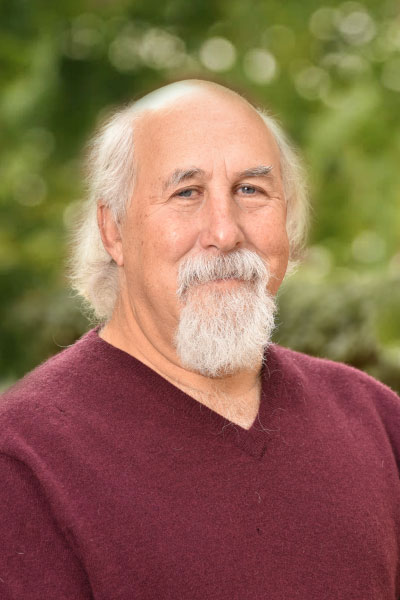
Email: schlinge@lifesci.ucla.edu
Office: 2135 TLSB
Phone: (310) 825-5716
Website: http://www.physci.ucla.edu/research/schlinger
Research Interests
Estrogen Synthesis in Brain: We have maintained a long interest in the actions of steroids on the central nervous system developmentally and in adulthood. My lab explores sex steroid synthesis and metabolism with a focus on aromatase the enzyme that catalyzes conversion of androgens into estrogens. Over the years, our work has demonstrated expression and activity of this enzyme in brain of diverse species and with diverse functions. Our work has documented evidence for a role of neuroestrogens in neuronal development and proliferation, neural repair and protection, sexual and aggressive behaviors, learning and memory, and auditory processing.
Neurosteroidogenesis: A concept that emerged a number of years ago was that hormonal steroids could be synthesized, de novo, in the brain itself. For such synthesis to occur, enzymes and transporters are required to be expressed and active in brain that start with cholesterol and, by a series of enzyme catalyzed reactions, produce a diversity of functional steroidal end products. Dogma has held that these biochemical processes occur exclusively in vertebrate gonads and adrenals. Whether this process actually occurred in the vertebrate brain and whether these neurosteroids were functional remained somewhat open questions for many years. My lab explores this phenomenon in wild and captive avian models. Our work supports the concept of functional neurosteroidogenesis and extends our appreciation of this process into our thinking of the hormonal control of natural animal behavior.
Physiology of Elaborate Animal Courtship Over 23 years ago, I began work developing an animal model, the golden-collared manakin (Manacus vitellinus) of Panama, as a system for investigating the hormonal, neural and muscular control of a complex vertebrate behavior. This work spans tropical field behavioral ecology with organ level physiology and molecular and cellular biology. Our study of the extraordinary and physically challenging courtship of male Manacus species has revealed unique specializations in skeletal and muscle anatomy as well as that of endocrine, neural and muscle physiology. Sequencing of this manakin genome together with our efforts to promote genomic sequencing of other manakins, makes these birds now a key animal clade for using molecular genetic approaches to understand the evolution and development of complex social systems and behavior.
Education
B.S., Biology, Tufts University
M.S., Biology, Boston University 1983
Ph.D., Biology, Boston University 1988
Selected Publications
Saldanha, C.J., Remage-Healey, L., Schlinger, B.A. 2011. Synaptocrine Signaling: steroid synthesis and action at the synapse. Endocrine Revs. 32:532 – 549
Barske J., Schlinger B.A.,Wikelski M., Fusani L. Female choice for male motor skills. 2011. Proc. Roy. Soc. Lond. B. 278:3523-3528.
Remage-Healey, L., Dong, S.*, Maidment, N., and B.A. Schlinger. 2011. Presynaptic Control of Rapid Estrogen Fluctuations in the Songbird Auditory Forebrain. J. Neurosci. 31:10034 –10038.
Fuxjager, M., K. Longpre, J. Chew*, L. Fusani and B.A. Schlinger. 2013. Peripheral androgen receptors sustain the acrobatics and fine motor skill of elaborate male courtship. Endocrinology 154: 3168-3177.
Barske, J., Fusani L., Wikelski M., Feng N., Santos M., Schlinger B.A. 2013. Energetics of courtship of Golden-collared manakins (Manacus vitellinus). Proc. Roy. Soc. Lond- B. Dec 18;281(1776):20132482. doi
Fuxjager, M.J., J. Eaton*, W.R Lindsay, L.H Salwiczek, M.A Rensel, J. Barske, L.B Day and B.A Schlinger. 2015. Evolutionary patterns of adaptive acrobatics and physical performance predict expression profiles of androgen receptor – but not estrogen receptor – in the forelimb musculature. Funct. Ecol. 29, 1197–1208.
Fuxjager, M.J. #, J-H., Lee#, T-M., Chan, J. H. Bahn, J.G. Chew*, X.Xiao‡, and Barney A. Schlinger‡. 2016. Hormones, Genes, and Athleticism: Effect of Androgens on the Avian Muscular Transcriptome. Mol Endocrinology, 30: 254-71.
Bodony, D.J, Kharon, Aharon, Swenson, G.W., Wikelski, M., Day, L., Fusani, L., Friscia, A and B.A. Schlinger. 2016. Determination of the wingsnap sonation mechanism of the Golden-Collared Manakin (Manacus vitellinus). J. Exp. Biol. 219: 1524-1534.
Kosarussavadi, S., Pennington, Z. and B.A. Schlinger. 2017. Across Sex and Age: Learning and Memory and Patterns of Avian Hippocampal Gene Expression. Behav. Neurosci. 131: 483-491.
Pradhan, D.S., Van Ness, R.*, Chunqi, M., Jalabert, C., Hamden, J.E., Soma, K.K., Ramenofsky, M. and B.A. Schlinger, B.A. 2019. Phenotypic flexibility of glucocorticoid signaling in skeletal muscles of a songbird preparing to migrate. Horm. Behav. 116, 104586.
Art Arnold
Art Arnold
Distinguished Professor
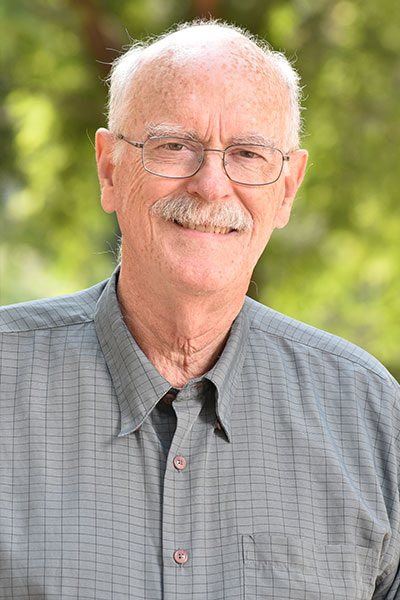
Email: arnold@ucla.edu
Office: 1129 TLSB
Phone: (310) 825-2169
Website: https://arnoldlab.ibp.ucla.edu/
Biography
I graduated from Grinnell College, and received my PhD from Rockefeller University. Since 1976, I have been a professor at UCLA. I was Chair of the Department of Physiological Science (now Integrative Biology & Physiology) at UCLA (2001-2009), and Director of the Laboratory of Neuroendocrinology of the Brain Research Institute (2005-2017). I was inaugural President of the Society of Behavioral Neuroendocrinology (1997-1999), and received the SBN Lehrman Lifetime Achievement Award in 2010. I was founding Editor-in-Chief of Biology of Sex Differences (2010-2018).
Research Interests
The Arnold lab studies biological factors that make males and females different. Many diseases affect the two sexes differently, implying that one sex is protected or harmed by factors in one sex. It is important to identify the mechanisms underlying the sex difference as one strategy to identify factors that are protective. These factors might be targets for novel therapies.
Many sex differences in physiology and disease are caused by sex hormones coming from the testes or ovaries. We have found, however, that some sex differences also are caused by genes on the sex chromosomes that act outside of the gonads. We are interested in constructing a general theory of sex determination and sexual differentiation that applies to any tissue.
We have used several animal models that offer significant advantages for understanding the factors that cause sex bias in physiology. One is the Four Core Genotypes model, in which the type of the gonad of the animal (testes or ovaries) is not related to its complement of sex chromosomes (XX or XY). This model allows comparing mice that have different sex chromosomes but the same type of gonad, to find traits that are influenced by the complement of sex chromosomes.
Education
A.B., Psychology, Grinnell College 1967
Ph.D., Neurobiology and Behavior, The Rockefeller University 1974
Selected Publications
Arnold AP. 2019 Rethinking sex determination of non-gonadal tissues. Current Topics in Developmental Biology 2019; 134:289-315.
Itoh Y, Golden LC, Itoh N, Matsukawa MA, Ren E, Tse V, Arnold AP, Voskuhl RR. 2019 The X-linked histone demethylase Kdm6a in CD4+ T lymphocytes modulates autoimmunity. Journal of Clinical Investigation 130:3852-3863.
Arnold AP, Disteche CM. 2018 Commentary: Sexual inequality in the cancer cell. Cancer Research 78: 5504-5505.
Umar S, Cunningham CM, Itoh Y, Moazeni S, Vaillancourt M, Sarji S, Centala A, Arnold AP, Eghbali M. 2018 The Y chromosome plays a protective role in experimental hypoxic pulmonary hypertension. American Journal of Respiratory and Critical Care Medicine 197(7):952-955.
Mauvais-Jarvis F, Arnold AP, Reue K. 2017 A guide for the design of pre-clinical studies on sex differences in metabolism. Cell Metabolism 25:1216-1230.
Arnold AP. 2017 A general theory of sexual differentiation. Journal of Neuroscience Research 95:291-300. Online 7 November 2016.
Arnold AP, Cassis LA, Eghbali M, Reue K, Sandberg K. 2017 Sex hormones and sex chromosomes cause sex differences in the development of cardiovascular diseases. Artheriosclerosis Thrombosis & Vascular Biology 37:746-756.
Burgoyne PS, Arnold AP 2016 A primer on the use of mouse models for identifying direct sex chromosome effects on non-gonadal tissues that cause sex differences in traits. Biology of Sex Differences 7:68.
Du S., Itoh N, Askarinama S, Hilla H, Arnold AP, Voskuhl RR. 2014 XY sex chromosome complement, compared with XX, in the CNS confers a greater neurodegenerative response to injury. Proceedings of the National Academy of Sciences, USA, 111:2806-2811.
Chen X, McClusky R, Chen J, Beaven SW, Tontonoz P, *Arnold AP, *Reue K (*equal last authors). 2012 The number of X chromosomes causes sex differences in adiposity and metabolism in mice. PLoS Genetics 8(5):e1002709. Epub 2012 May 10
James G. Tidball
James G. Tidball
Distinguished Professor
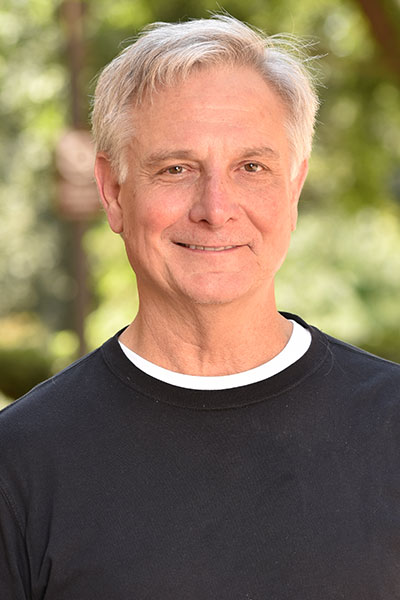
Email: jtidball@physci.ucla.edu
Office: 1135 TLSB
Phone: (310) 206-3395
Biography
My interest in biological research was solidified by my undergraduate experience at Duke University in the Department of Zoology, where I was a student research assistant with Professor Steve Wainwright. Through that experience, I became fascinated with the question of how organisms detect and respond to changes in their mechanical environment. I pursued that question as a Ph.D. student in the lab of Professor David Chapman at Dalhousie University in Halifax, Nova Scotia, where I tried to learn how corals detect the direction of water movement. I then returned to Duke University as a post-doctoral fellow, to further study interactions between cells and the mechanical environment, focusing on the molecular structure of myotendinous junctions (MTJs) where forces generated by muscles are transferred to the extracellular matrix.
Shortly after we initiated those studies of the MTJ, the defective gene product that causes the lethal muscle wasting disease called Duchenne muscular dystrophy (DMD) was discovered by Dr. Lou Kunkel and Eric Hoffman. The missing protein in the disease is a membrane-associated, structural protein called dystrophin, forming the basis for the belief that the disease was caused by a mechanical defect in the muscle cell membrane. My lab then discovered that dystrophin was highly-concentrated at MTJs, but we saw that many features of the disease did not support the idea that DMD was primarily caused by a mechanical defect in the cell membrane. That realization set us on a path to identify the primary cause of muscle cell death in DMD, eventually leading to our discovery that an immune response to the mutant muscle cells was the source of most muscle damage in the disease. Since that finding, we have continued to fully-delineate the role of the immune system in muscular dystrophy, and have built on those findings in pre-clinical studies aimed at manipulating the immune response to reduce the pathology of muscular dystrophy.
Research Interests
Research in the Tidball lab is directed toward understanding processes that regulate skeletal muscle wasting and regeneration. Exploring the mechanisms through which the immune system can modulate skeletal muscle wasting, injury, regeneration and growth is a particular focus of the lab. Discoveries in the our lab over the past 25 years have shown that immune cells, especially myeloid cells, play a major role in modulating muscle injury and repair that occur in chronic, muscle wasting diseases and following acute injuries. For example, our findings have shown that macrophages and eosinophils are key effector cells in the pathogenesis of Duchenne muscular dystrophy. Ongoing investigations in the lab are revealing the identity of specific molecules released by myeloid cells that promote muscular dystrophy. However, discoveries in our lab have also shown that regulatory interactions between cytotoxic, M1 macrophages in dystrophic muscle and anti-inflammatory, M2 macrophages are important in regulating the balance between the death of dystrophic muscle and regenerative processes. This work showed that the experimental manipulation of the balance between the functions of M1 and M2 macrophages can affect the severity of muscular dystrophy, suggesting that manipulation of macrophage phenotype in vivo may have potential therapeutic value for the treatment of the disease. We are now building on those findings in an NIH-funded preclinical investigation in which we are testing whether pharmacological manipulations of co-stimulatory signals that macrophages provide to T-lymphocytes can attenuate the pathology of muscular dystrophy.
Other NIH-funded investigations in our lab explore epigenetic mechanisms through which an anti-aging protein called Klotho affects myogenesis and muscle regeneration in neonatal and aging muscle. We are also determining how those Klotho-driven epigenetic regulatory influences affect muscle growth following acute muscle injury or exercise.
Education
B.S., Duke University 1975
Ph.D., Dalhousie University 1981
Selected Publications
Welc, S.S., Flores, I., Wehling-Henricks, M. Ramos, J. Wang, Y. Bertoni, C. and J. G. Tidball., “Targeting a therapeutic LIF transgene to muscle via the immune system ameliorates muscular dystrophy”, Nature Communications, 10 : 1-17 (2019) .
Wang, Y, M. Wehling-Henricks, S.S. Welc, A.L. Fisher, Q. Zuo and J.G. Tidball., “Aging of the immune system causes reductions in muscle stem cell populations, promotes their shift to a fibrogenic phenotype, and modulates sarcopenia”, FASEB J, 33 (1): 1414-1427 (2019) .
Wang, Y., S.S. Welc, M. Wehling-Henricks and J.G. Tidball., “Myeloid cell-derived tumor necrosis factor-alpha promotes sarcopenia and regulates muscle cell fusion with aging muscle fibers”, Aging Cell, 17 : e12828- (2018) .
Tidball, J.G., Welc, S. and Wehling-Henricks, M., “The immunobiology of inherited muscular dystrophies”, Comprehensive Physiology, 8 : 1313-1356 (2018) .
Wehling-Henricks, M, Welc, S., Samengo, G., Rinaldi, C., Lindsey, C., Wang, Y., Lee, J., Kuro-o, M. and J. G. Tidball., “Macrophages escape Klotho gene silencing in the mdx mouse model of Duchenne muscular dystrophy and promote muscle growth and increase satellite cell numbers through a Klotho-mediated pathway”, Human Molecular Genetics, 27 : 14-29 (2018) .
Tidball, J.G., “Regulation of muscle growth and regeneration by the immune system”, Nature Reviews Immunology, 17 : 165-178 (2017) .
Wehling-Henricks, M., Li, Z., Lindsey, C., Wang, Y., Welc, S.S., Ramos, J.N., Khanlou, N., Kuro-O, M., Tidball, J.G., “Klotho gene silencing promotes pathology in the mdx mouse model of Duchenne muscular dystrophy”, Human Molecular Genetics, 1-18 (2016) .
Wang, Y., Wehling-Henricks, M., Samengo, G. and J.G. Tidball, “Increases of M2a macrophages and fibrosis in aging muscle are influenced by bone marrow aging and negatively regulated by muscle-derived nitric oxide”, Aging Cell, 14 : 678-688 (2015) .
Tidball, J.G. and M. Wehling-Henricks, “Shifts in macrophage cytokine production drive muscle fibrosis”, Nature Medicine, 21 : 665-666 (2015) .
Wang Y, Wehling-Henricks M, Samengo G, Tidball JG “Increases of M2a macrophages and fibrosis in aging muscle are influenced by bone marrow aging and negatively regulated by muscle-derived nitric oxide.” Aging Cell, 14 (4): 678-88 (2015).
Gene Block
Gene Block
Distinguished Professor
Chancellor
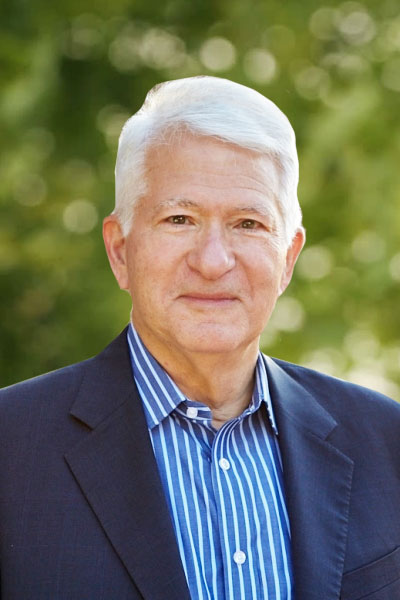
Email: chancellor@ucla.edu
Office: 2147 Murphy Hall
Phone: (310) 825-2151
Website: https://chancellor.ucla.edu/
Education
B.A. Psychology, Stanford University 1970
M.S., Psychology, University of Oregon 1972
Ph.D., Psychology, University of Oregon 1975
Scott Chandler
Biography
I am married to my lovely wife Sonja for 35 years and have two wonderful daughters, Jennifer and Danielle. We love to travel, hike and photograph our journeys. I have a passion for photography and specialize in both landscape and sports genres. I regularly photograph sports events for the UCLA athletic department and have a number of prints on the Walls of UCLA buildings, such as Powell library and the Geology building.
Research Interests
My global interest is in how the central nervous system controls movement. Precisely how we produce coordinated, rhythmical movements such as locomotion, mastication, and respiration is a fundamental problem in neuroscience that is poorly understood. During injury or disease these basic types of movements, which we take for granted, can be compromised. My lab uses animal models to study how rhythmical jaw movements are produced. We use a combination of electrophysiological, molecular, pharmacological techniques in conjunction with computational modeling and bioinformatics to address basic questions about how single and small networks of neurons in the brainstem orchestrate coordinated activity in synapses and ion channels to produce unique discharge patterns that occur during rhythmical movements. We have found that localized groups of neurons within small areas of the brainstem are important for the basic rhythmic component of mastication and that specific ion channels are activated to produce the appropriate discharge patterns reminiscent of masticatory patterns. More recently, the lab has obtained transgenic mice that produce the majority of symptoms of the devastating disease, Amyotrophic Lateral Sclerosis (ALS), otherwise known as Lou Gehrig’s disease. We found that certain ion channels in both sensory and motor neurons are abnormally active prior to the onset of symptoms of the disease. Although these studies are in the early stages, they could provide insight into how the motoneuronal neurodegeneration that is responsible for paralysis and death occur, and will start to identify new molecular targets for development of rational drug therapies to delay motoneuronal degeneration and prolong the life of ALS patients.
Education
B.S., Neurobiology, University of California, Berkeley
Ph.D., Physiology/Neurophysiology, University of California, Los Angeles 1979
Selected Publications
Liu W, Venugopal S, Majid S, Ahn IS, Diamante G, Hong J, Yang X, Chandler SH (2020) ‘Single-cell RNA-seq analysis of the brainstem of mutant SOD1 mice reveals perturbed cell types and pathways of amyotrophic lateral sclerosis.’ Neurobiol Dis, In Press. PMID: 32360664
Seki S, Tanaka S, Yamada S, Tsuji T, Enomoto A, Ono Y, Chandler SH, Kogo M (2020) ‘Neuropeptide Y modulates membrane excitability in neonatal rat mesencephalic V neurons.’ J Neurosci Res, 98 (5): 921-935. PMID: 31957053
Venugopal S, Seki S, Terman DH, Pantazis A, Olcese R, Wiedau-Pazos M, Chandler SH (2019) ‘Resurgent Na+ Current Offers Noise Modulation in Bursting Neurons.’ PLoS Comput Biol, 15 (6): e1007154. PMID: 31226124
Salomon D., Martin-Harris., Mullen B., Odegaard B., ZvinyatskovskiyA., and Chandler S.H, “Brain Literate: Making Neuroscience Accessible to a Wider Audience of Undergraduates”, J. Undergraduate Neurosci. Educ, 13 : 1-9 (2015) .
Masoumi A., Low E., Shoghi T., Chan P., Hsiao CF., Chandler S.H., & Martina Wiedau-Pazos., “Enrichment of human embryonic stem cell derived motor neuron cultures using arabinofuranosyl cytidine”, Future Neurol, 10 : 91-99 (2015) .
Venugopal S., Hsiao CF., Sonoda T., Weidau-Pazos M.,and Chandler S.H., “Homeostatic dysregulation in membrane properties of masticatory motoneurons compared to oculomotor neurons in a mouse model for Amyotrophic Lateral Sclerosis”, J. Neurosci, 35 : 707-720-720 (2015) .
Tsuruyama K, Hsiao CF, Chandler SH, “Participation of a persistent sodium current and calcium-activated nonspecific cationic current to burst generation in trigeminal principal sensory neurons”, J. Neurophysiology, 110 : 1903-1914 (2013) .
Hsiao CF, Kaur G, Vong A, Bawa H, Chandler SH, ” Participation of Kv1 channels in control of membrane excitability and burst generation in mesencephalic V neurons”, J. Neurophysiology, 101 : 1407-1418 (2009) .
Hsiao, C.F., Gougar, K., Asai, J. and Chandler, S.H, ” Intrinsic membrane properties and morphological characteristics of interneurons in the rat supratrigeminal region”, J.Neurosci. Res, 85 : 3673-3686 (2007) .
Enomoto, A., Han, J.M., Hsiao, C.F., Wu, N. and Chandler, S.H., “Participation of sodium currents in burst generation and control of membrane excitability in mesencephalic trigeminal neurons”, J Neurosci, 26 : 3412-3422 (2006) .
Rachelle Crosbie
Rachelle Crosbie
Professor
Department Chair
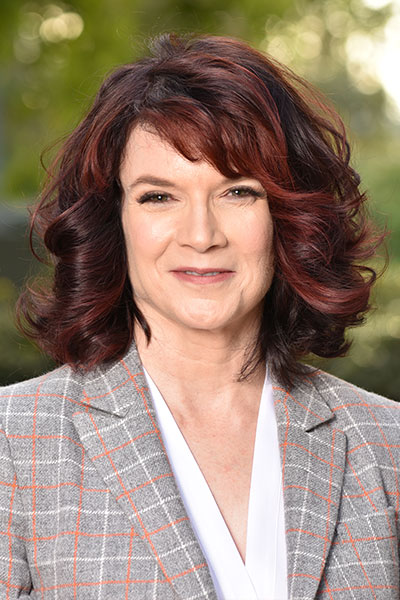
Email: rcrosbie@physci.ucla.edu
Office: 2121 TLSB
Phone: (310) 794-2103
Website: https://crosbie.ibp.ucla.edu/
Biography
Rachelle was raised in the Big Thicket of southeast Texas and spent her childhood in search of crawdads, water moccasins, and cottonmouths near the bayou. At the age of nine, she moved with her family to Saudi Arabia, where she learned to scuba dive, ride a camel, and survive in the Arabian desert. All of these adventures prepared her for a life in academia. During college, a summer internship at M.D. Anderson Cancer Center in Houston sparked her interest in pursuing a career in research. She completed her Ph.D. graduate thesis with Professor Emil Reisler in the Department of Biochemistry at UCLA. During this time, she developed a love of protein biochemistry and an appreciation of the intricate relationship between the structure and function of contractile proteins that drive movement in skeletal muscle. As a graduate student, she was also passionate about education and received departmental awards for research and teaching. She then pursued postdoctoral research training in the laboratory of Professor and HHMI Investigator Kevin P. Campbell at the University of Iowa Carver College of Medicine, during which time she was supported by the Robert Sampson Postdoctoral Fellowship from the Muscular Dystrophy Association. Her research was focused on Duchenne muscular dystrophy, which is the most common of the rare diseases that affect children. During her postdoctoral research, she discovered a muscle protein that is associated with dystrophin and assigned it the name sarcospan based on its multiple sarcolemma-spanning domains. Her lab is now focused on basic and translational research of muscular dystrophies. She maintains her passion for education and teaching. She is a National Academies Education Scholar and was awarded the UCLA campus-wide Chancellor’s Distinguished Teaching Award, the Coalition Duchenne Lotus Award, the Golden Test Tube Award, and the Life Sciences Award for Teaching Innovation. She developed a fully online course on Duchenne muscular dystrophy that is offered at all University of California campuses and beyond. She leads a NIH T32 training grant program that supports graduate students and postdoctoral fellows in muscle laboratories at UCLA. The results from her first education focused research study were recently published (Choe et al., 2019 CBE Life Sci Edu). The article describes a new coding method to determine the student engagement value of asynchronous online lecture videos. A second manuscript that is in preparation is focused on how students experience online courses. When out of the lab, Professor Crosbie enjoys driving her 1968 corvette on the Pacific Coast Highway.
Research Interests
Loss of appropriate connection between the muscle cell membrane and its surrounding extracellular matrix is a critical initiating event in Duchenne muscular dystrophy (DMD), which is an inherited muscle wasting disorder that affects all skeletal and cardiac muscles. In fact, there are more children with this inherited muscle-wasting disorder than with all combined childhood cancers; yet there is no treatment. Whereas survival rates for childhood cancers have increased from 58% in 1975-1977 to 80% in 1996-2003, survival rates for DMD have remained the same, 0%. Thirty percent of the mutations in the dystrophin gene are spontaneous, which means that DMD will always be present in the population. Professor Crosbie’s research group has developed the use of the myofiber’s own compensatory mechanisms as a strategy to ameliorate dystrophic muscle. Such approaches are advantages in that they have the potential to target all DMD cases, regardless of the specific dystrophin mutation. Her lab has discovered that sarcospan, a transmembrane protein, evokes a set of molecular events that, when individually activated in DMD muscle, ameliorate dystrophin-deficient disease including cardiac, respiratory, and skeletal muscle dysfunction. The Crosbie lab has identified new chemical entities (small compounds) that activate sarcospan in DMD muscle cells, which the lab is pursuing as a treatment for DMD. Professor Crosbie’s group has also developed an in vitro platform to investigate the interaction of muscle resident cells with the extracellular matrix as a mechanism to investigate the effect of fibrosis on muscle function in health and disease. Professor Crosbie’s research has been continuously funded by NIH R01 grants, in addition to grants from industry and non-profit organizations.
Education
B.S., Biochemistry, Texas A&M University 1989
Ph.D., Biochemistry, University of California, Los Angeles 1994
Postdoctoral Fellowship, University of Iowa Carver College of Medicine
Selected Publications
Shu C, Kaxon-Rupp AN, Collado JR, Damoiseaux R, Crosbie RH (2019) ‘Development of a high-throughput screen to identify small molecule enhancers of sarcospan for the treatment of Duchenne muscular dystrophy.’ Skelet Muscle, 9 (1): 32. PMID: 31831063.
Choe RC, Scuric Z, Eshkol E, Cruser S, Arndt A, Cox R, Toma SP, Shapiro C, Levis-Fitzgerald M, Barnes G, Crosbie RH (2019) ‘Student Satisfaction and Learning Outcomes in Asynchronous Online Lecture Videos.’ CBE Life Sci Educ, 18 (4): ar55. PMID: 31675279.
Gibbs EM, Barthélémy F, Douine ED, Hardiman NC, Shieh PB, Khanlou N, Crosbie RH, Nelson SF, Miceli MC (2019) ‘Large in-frame 5′ deletions in DMD associated with mild Duchenne muscular dystrophy: Two case reports and a review of the literature.’ Neuromuscul Disord, 29 (11): 863-873. PMID: 31672265.
Parvatiyar MS, Brownstein AJ, Kanashiro-Takeuchi RM, Collado JR, Dieseldorff Jones KM, Gopal J, Hammond KG, Marshall JL, Ferrel A, Beedle AM, Chamberlain JS, Renato Pinto J, Crosbie RH (2019) ‘Stabilization of the cardiac sarcolemma by sarcospan rescues DMD-associated cardiomyopathy.’ JCI Insight, 4 (11): 1-21. PMID: 31039133.
Eric Deeds
Eric Deeds
Professor
Vice Chair, Life Sciences Core
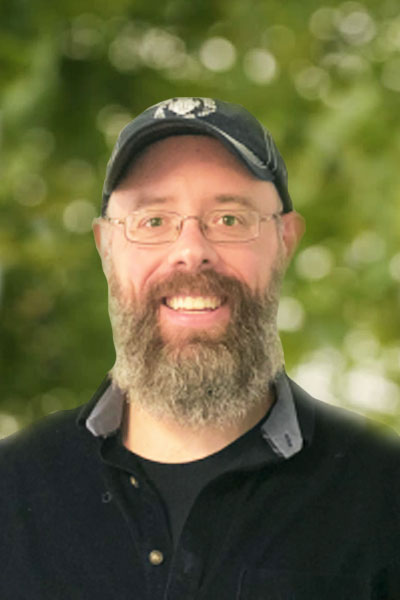
Email: deeds@ucla.edu
Office: 570E Boyer Hall
Phone: (310) 825-1034
Education
B.S., Biochemistry, Case Western Reserve University 2001
B.A., English, Case Western Reserve University 2001
A.M., Biology, Harvard University 2003
Ph.D., Biology, Harvard University 2005
Selected Publications
Vakser, I. A. and Deeds, E. J., “Computational Approaches to Macromolecular Interactions in the Cell”, Curr Opin Struct Biol, 55 : 59-65 (2019) .
Shockley, E. M., Rouzer, C. A., Marnett, L. J., Deeds, E. J. and Lopez, C. F., “Signal integration and information transfer in an allosterically regulated network”, npc Syst Biol Appl, 5 (1): 324-333 (2019) .
Suderman, R. and Deeds, E. J., “Intrinsic limits on information transfer in cellular signaling networks”, Interface Focus, 8 (6): 20180039- (2018) .
Nariya MK, Kim JH, Xiong J, Kleindl PA, Hewarathna A, Fisher AC, Joshi SB, Schneich C, Forrest ML, Middaugh CR, Volkin DB, Deeds EJ, “Comparative Characterization of Crofelemer Samples Using Data Mining and Machine Learning Approaches With Analytical Stability Data Sets”, Journal of pharmaceutical sciences, 106 (11): 3270-3279 (2017) .
Rowland MA, Greenbaum JM, Deeds EJ, “Crosstalk and the evolvability of intracellular communication”, Nature communications, 8 : 16009- (2017) .
Suderman R, Bachman JA, Smith A, Sorger PK, Deeds EJ, “Fundamental trade-offs between information flow in single cells and cellular populations”, Proceedings of the National Academy of Sciences of the United States of America, 114 (22): 5755-5760 (2017) .
Kleindl PA, Xiong J, Hewarathna A, Mozziconacci O, Nariya MK, Fisher AC, Deeds EJ, Joshi SB, Middaugh CR, Schneich C, Volkin DB, Forrest ML, “The Botanical Drug Substance Crofelemer as a Model System for Comparative Characterization of Complex Mixture Drugs”, Journal of pharmaceutical sciences, 106 (11): 3242-3256 (2017) .
Hewarathna A, Mozziconacci O, Nariya MK, Kleindl PA, Xiong J, Fisher AC, Joshi SB, Middaugh CR, Forrest ML, Volkin DB, Deeds EJ, Schneich C, “Chemical Stability of the Botanical Drug Substance Crofelemer: A Model System for Comparative Characterization of Complex Mixture Drugs”, Journal of pharmaceutical sciences, 106 (11): 3257-3269 (2017) .
Nariya MK, Israeli J, Shi JJ, Deeds EJ, “Mathematical Model for Length Control by the Timing of Substrate Switching in the Type III Secretion System”, PLoS computational biology, 12 (4): e1004851- (2016) .
Wani PS, Rowland MA, Ondracek A, Deeds EJ, Roelofs J, “Maturation of the proteasome core particle induces an affinity switch that controls regulatory particle association”, Nature communications, 6 (6384): (2015) .
Gordon Fain
Gordon Fain
Distinguished Professor
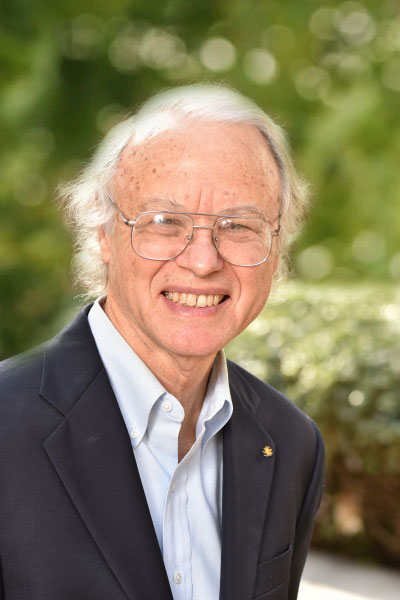
Email: gfain@ucla.edu
Office: A222B, the Jules Stein Eye Institute
Phone: (310) 206-4281
Biography
Gordon Fain got his BA at Stanford in Biology and PhD at Johns Hopkins in Biophysics. After postdocs at Harvard and the École Normale Supérieure in Paris, he came to UCLA in 1975 and remained for his entire career. A Gugenheim fellow, NIH MERIT scholar, and Fellow of AAAS, he retired from active service in 2017 but is still funded by the NIH and continues his research. When he retired, he moved with all his equipment and people into the laboratory of his former graduate student Alapakkam Sampath, who is Professor and Associate Director of the Jules Stein Eye Institute at UCLA. They share students and research personnel and offer a joint program in the physiology and biophysics of the retina.
Research Interests
A vertebrate photoreceptor uses a G-protein receptor (rhodopsin) and a G-protein cascade to produce the electrical response that signals a change in light intensity. Powerful new techniques have made it possible to understand the working of this cascade in extraordinary detail. The reason for this is that practically every protein involved in the cascade in a photoreceptor, from the pigment molecule rhodopsin to the G-protein and channels, but including also a large number of control proteins, are expressed only in the photoreceptors and nowhere else in the body. This makes it possible with genetic techniques to create mice in which these proteins have been knocked out, over or under expressed, or replaced with proteins of modified structure. We use electrical recording to study the effects of such genetic alterations on the light responses of mouse rods and cones, in order to understand the role of these proteins in the visual cascade. We are especially interested in modulatory enzymes and their function in light and dark adaptation. We also have a long-standing interest in mechanisms of photoreceptor degeneration in genetically inherited disease.
Education
B.S., Biology, Stanford University 1968
Ph.D., Biophysics, Johns Hopkins University 1973
Selected Publications
Reingruber, J., N.T. Ingram, Griffis, K.G., and G.L. Fain. 2020. A kinetic analysis of mouse rod and cone photoreceptor responses. Journal of Physiology, in press.
Ellis, E.M., R. Frederiksen, A. Morshedian, G. L. Fain, and A.P. Sampath. Separate ON and OFF pathways in vertebrate vision first arose during the Cambrian. Current Biology, in press.
Ingram, N.T., A.P. Sampath, and G.L. Fain. 2020. Membrane conductances of mouse cone photoreceptors. Journal of General Physiology. Mar 2;152(3). PMID: 31986199. pii: e201912520. doi: 10.1085/jgp.201912520.
Fain, G.L. 2019. Sensory Transduction (second edition). Oxford University Press, Oxford.
Morshedian, A., J.J. Kaylor, S.Y. Ng, A. Tsan, R. Frederiksen, T. Xu, L. Yuan, A.P. Sampath, R.A. Radu, G.L. Fain, and G.H. Travis. 2019. Light-Driven Regeneration of Cone Visual Pigments through a Mechanism Involving RGR Opsin in Muller Glial Cells. Neuron. 102:1172-1183 e1175. PMID: 31056353. doi: 10.1016/j.neuron.2019.04.004.
Ingram, N.T., A.P. Sampath, and G.L. Fain. 2019. Voltage-clamp recordings of light responses from wild-type and mutant mouse cone photoreceptors. Journal of General Physiology. 151:1287-1299. PMID: 31562185. doi: 10.1085/jgp.201912419.
Wang, T., J. Reingruber, M.L. Woodruff, A. Majumder, A. Camarena, N.O. Artemyev, G.L. Fain, and J. Chen. 2018. The PDE6 mutation in the rd10 retinal degeneration mouse model causes protein mislocalization and instability and promotes cell death through increased ion influx. J Biol Chem. 293:15332-15346. PMID: 30126843. doi: 10.1074/jbc.RA118.004459
Fain G, Sampath AP, “Rod and cone interactions in the retina”, F1000Research, 7 : (2018) .
Morshedian A, Woodruff ML, Fain GL, “Role of recoverin in rod photoreceptor light adaptation”, The Journal of physiology, 596 (8): 1513-1526 (2018) .
Morshedian A, Fain GL, “Light adaptation and the evolution of vertebrate photoreceptors”, The Journal of physiology, 595 (14): 4947-4960 (2017) .
Kaylor JJ, Xu T, Ingram NT, Tsan A, Hakobyan H, Fain GL, Travis GH, “Blue light regenerates functional visual pigments in mammals through a retinyl-phospholipid intermediate”, Nature communications, 8 (1): 16- (2017) .
Morshedian A, Fain GL, “The evolution of rod photoreceptors”, Philosophical transactions of the Royal Society of London. Series B, Biological sciences, 372 (1717): (2017) .
Ingram NT, Sampath AP, Fain GL, “Why are rods more sensitive than cones?”, The Journal of physiology, 594 (19): 5415-26 (2016) .
Reingruber J, Holcman D, Fain GL, “How rods respond to single photons: Key adaptations of a G-protein cascade that enable vision at the physical limit of perception”, BioEssays : news and reviews in molecular, cellular and developmental biology, 37 (11): 1243-52 (2015) .


